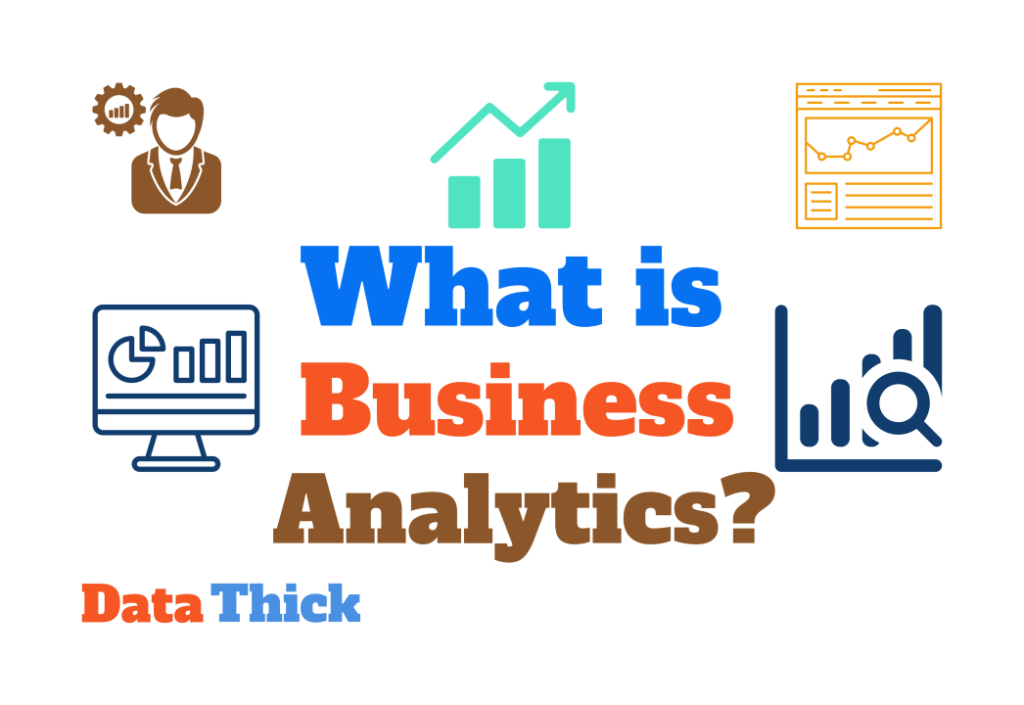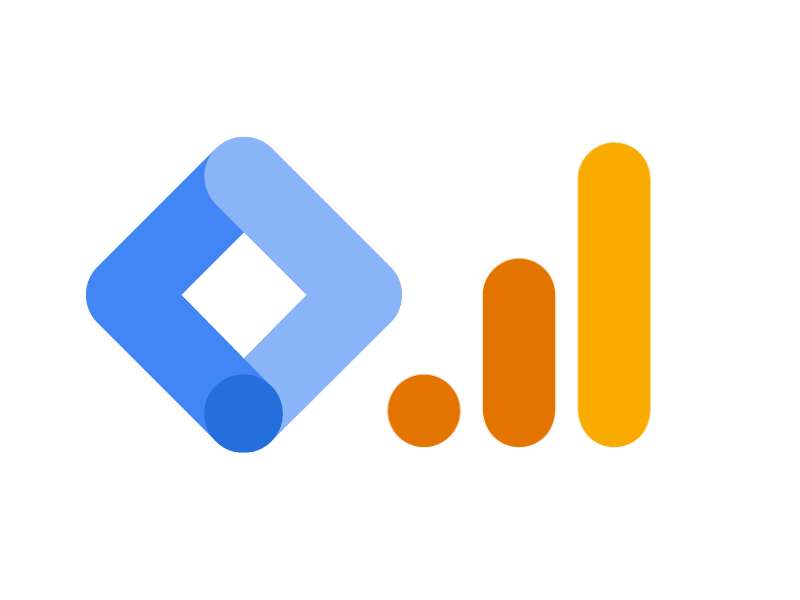Business Analytics involves the application of statistical analysis and operational data to optimize business decisions. It empowers organizations to measure performance and predict outcomes.
In today’s data-driven world, companies harness business analytics to enhance their strategic planning and gain a competitive edge. This multifaceted approach relies on methodologies such as predictive analytics, data mining, and statistical analysis to scrutinize an array of business operations.
By interpreting vast datasets, analysts can uncover valuable insights that drive efficiency and profitability. Enterprises leverage these insights for a variety of objectives, including marketing strategies, risk management, and improving customer experiences. As technology advances, the role of business analytics grows, becoming an integral part of an organization’s toolkit for informed decision-making and long-term success.
The Rise Of Business Analytics
Business analytics has become a powerhouse in the corporate world. Companies now lean on data-driven insights to make strategic decisions. It’s reshaping industries and fueling growth at an unprecedented pace.
Historical Development
The journey of business analytics began with simple data collection and moved toward advanced reporting. The initial tools were basic spreadsheets. Now, we have complex algorithms and predictive models.
- 1970s-1980s: Data management starts gaining ground in businesses.
- 1990s: Data warehouses and storage solutions become popular.
- Early 2000s: Business Intelligence emerges, focusing on past data for business planning.
- The 2010s onwards: Big data and predictive analytics set the stage for futuristic insights.
Modern Business Landscape
The modern business environment thrives on fast, actionable insights. Analytics tools now offer real-time data processing and visualization.
| Tools | Impact |
|---|---|
| Machine Learning | Allows for pattern recognition and future forecasting. |
| Artificial Intelligence | Automates complex data analysis, leading to quicker decisions. |
| Cloud Computing | Enables scalability and access to data analytics from anywhere. |
Industries across the board—finance, healthcare, retail, and more—now rely on analytics. It helps them understand customer behavior, optimize operations, and increase profit margins.

Credit: www.netsuite.com
Key Components Of Business Analytics
Business Analytics plays a crucial role in guiding businesses through data-driven decision-making. Understanding its key components is essential to harness the full power of Business Analytics. Diving into these components reveals how data transforms into actionable insights.
Data Management
At the heart of Business Analytics lies Data Management. Effective data management ensures that high-quality data flows seamlessly through a business’ analytical systems. It includes several critical processes:
- Data Collection: Gathering accurate and relevant data.
- Data Storage: Keeping data safe and accessible.
- Data Cleaning: Removing errors to maintain data quality.
- Data Processing: Organizing data for easy analysis.
Statistical Analysis
Statistical Analysis is the toolkit for unlocking data’s secrets. Through various statistical techniques, businesses can interpret data to understand trends and patterns. Key statistical methods include:
- Descriptive statistics that summarize data.
- Inferential statistics that conclude data samples.
- Regression analysis to find relationships between variables.
Predictive Modeling
Predictive Modeling is the ace up a business’s sleeve for future forecasting. It uses historical data to anticipate future outcomes. Companies can prepare better strategies with these models. Common predictive models are:
| Model Type | Usage |
|---|---|
| Classification models | Identify categories for new data |
| Time series analysis | Forecast trends over time |
| Clustering models | Find patterns in data sets |
Major Tools And Technologies
Business analytics unlocks the potential of data for businesses. To get the best insights, companies use powerful tools. These tools help to gather, process, and analyze data. We will explore some key tools and technologies here.
Software Suites
Main software tools make business analytics simpler. They offer many features in one package. Teams often choose these to save time and improve efficiency.
- Microsoft Excel: A versatile spreadsheet program.
- SAS: Offers advanced analytics.
- IBM SPSS: Popular for statistical analysis.
- Tableau: Great for data visualization.
Big Data Platforms
Big data platforms handle huge data sets. These sets can be complex. These platforms are designed to process and analyze all that data quickly and accurately.
| Platform | Use |
|---|---|
| Hadoop: | Stores and analyzes data. |
| Apache Spark: | Processes data quickly. |
| NoSQL Databases: | Handles varied data types. |
Visualization Software
Visualization tools turn data into charts and graphs. This makes patterns and trends easier to see and understand. These visuals help businesses make better decisions.
- QlikView: For interactive data discovery.
- Power BI: Integrates with Microsoft products.
- Google Data Studio: Connects with multiple data sources.
Business Analytics In Decision-Making
Business analytics transform data into insights. Companies make smarter decisions faster. This tool helps businesses understand trends and patterns. Effective decision-making drives success.
Strategic Use Cases
Strategic use cases show analytics in action.
- Market Analysis: Analytics assess market trends. Companies find new opportunities.
- Risk Management: Firms predict risks. They take preventive measures.
- Customer Insights: Understand customer behavior. Personalize offers, and boost sales.
- Operational Efficiency: Identify bottlenecks. Streamline processes, and cut costs.
Real-time Analytics Impact
Real-time analytics changes the game. Immediate data means swift action. Leaders respond to market shifts. They outpace competitors. Sales and marketing strategies become agile. Customer service excels.
| Aspect | Impact |
|---|---|
| Decision Accuracy | Data-driven choices reduce errors. |
| Opportunity Response | Act on opportunities with speed. |
| Risk Minimization | Foresee issues, avoid pitfalls. |
Case Studies
-
Retail Giant: Using customer data, a retail chain personalized marketing. Sales soared.
-
Healthcare Provider: A hospital reduced patient wait times. They analyzed staff workflows.
-
Manufacturing Firm: By forecasting demand, a manufacturer optimized inventory. Costs dropped.
Challenges And Solutions In Business Analytics
The success of modern businesses hinges on how well they understand and use data. But this journey is not without its challenges. This section of the blog dives into the common hurdles businesses face in analytics and the strategies to overcome them.
Data Quality And Security
Data is the foundation of business analytics. Yet, poor data quality can lead to misguided insights. Inconsistent data formats, incomplete data sets, and errors can skew analysis. Meanwhile, data security is vital in protecting sensitive information from breaches.
- Solutions:
- Implement data governance frameworks to ensure accuracy and quality.
- Use robust cybersecurity measures to guard against data breaches.
- Regularly update data quality tools for the best results.
Skill Gap And Training
As technology evolves, a skill gap in the workforce can emerge. Not every employee is a data scientist. Yet, understanding analytics is crucial.
- Solutions:
- Invest in ongoing training for staff to sharpen their analytics skills.
- Hire professionals with specialized knowledge in data analysis.
- Collaborate with educational institutions to tailor courses that fill skill gaps.
Emerging Trends
The world of business analytics never stands still. New trends like artificial intelligence (AI), machine learning (ML), and predictive analytics are reshaping the landscape.
- Solutions:
- Stay informed on emerging trends and technologies in analytics.
- Adopt flexible analytics platforms that can integrate new tools.
- Build a culture that embraces change and innovation.

Credit: online.hbs.edu
Future Outlook
The landscape of business analytics is dynamic and perpetually evolving. As we look ahead, exciting trends signal a transformation. These include the seamless blend of artificial intelligence in business processes, the leaps in predictive analytics, and the expansion of educational programs dedicated to analytics. Organizations that embrace these advancements will undoubtedly forge a competitive edge.
Artificial Intelligence Integration
Artificial intelligence (AI) has begun its voyage into business analytics. In the future, AI will become more intertwined with analytical tools. This integration promises automated insights and faster decision-making. The following points depict the future integration of AI in business analytics:
- Smart Data Discovery: AI will help professionals find patterns effortlessly.
- Enhanced Data Preparation: AI tools will refine and cleanse data with minimal human intervention.
- Voice-Activated BI: Expect to ask questions and receive answers from your data using natural language.
Predictive Analytics Advancements
Predictive analytics is set for significant strides forward. Emerging technologies will sharpen its accuracy and widen its reach. Look out for these key developments in predictive analytics:
- Real-time Forecasting: Immediate predictions will be the norm, transforming decision-making.
- Accessible Machine Learning: More businesses will use ML for predictive insights, no expert required.
- Prescriptive Action: Systems won’t just predict; they’ll recommend concrete actions.
Business Analytics Education
Education in business analytics is scaling up to meet growing demand. Institutions worldwide are crafting programs to build expertise in this field. Here are the educational trends to watch:
- Specialized Courses: Universities will offer courses focused on modern analytics tools and techniques.
- Online Learning Platforms: These platforms will provide flexible learning opportunities in analytics.
- Professional Certifications: Certifications will become essential for analysts to stay current.

Credit: www.ibm.com
FAQ On Business Analytics
What Are The 4 Types Of Business Analytics?
There are four main types of business analytics: descriptive, diagnostic, predictive, and prescriptive. Each offers insights to inform decision-making processes.
Is Business Analytics An It Job?
Business analytics can be part of an IT job, but it’s not exclusively IT-focused. It blends data analysis with business intelligence tasks across various departments, including IT.
Is Business Analytics A Good Major?
Business analytics is a valuable major as it equips students with skills in data analysis, strategic decision-making, and problem-solving, important in today’s data-driven business landscape.
What Does A Business Analyst Do?
A business analyst evaluates organizational processes, identifies needs, and develops strategies to improve efficiency and solve problems. They work as liaisons between stakeholders and IT to deliver data-driven solutions that enhance business operations.
What Is Business Analytics?
Business analytics involves using statistical methods and technologies to analyze historical data and provide actionable insights for decision-making.
Conclusion
Embracing business analytics transforms raw data into strategic insights. It equips companies with the foresight needed to outmaneuver competition. Remember, informed decisions are the backbone of enduring success. Harness these tools, and your enterprise can soar to new heights of efficiency and profitability.
Start analyzing, and start excelling.




